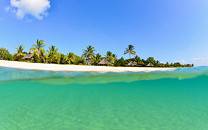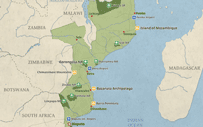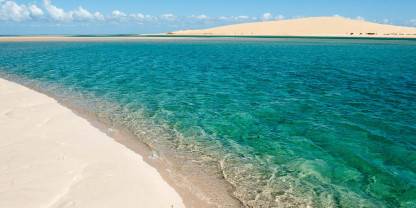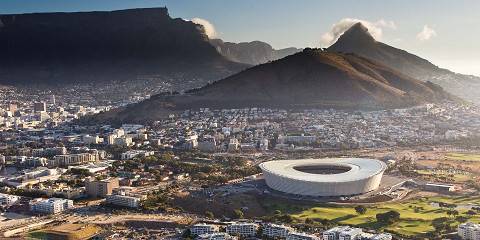Mozambique is southern Africa’s most alluring beach destination. Its endless dune-fringed coastline and pristine tropical islands are the main attractions. Idyllic five-star resorts and an abundance of marine life await those visiting the Bazaruto and Quirimbas Archipelagos. Maputo National Park is the perfect beach and bush combo, while Gorongosa and Zinave National Parks offer rewarding off-the-beaten-track classic safaris.

-
Rates (USD)
- $156 to $1,211 pp/day
-
Best Time To Go
- April to November (Lots of sunshine and little rain)
-
High Season
- May to October (Most parks never get busy)
-
Size
- 801,590km² / 309,495mi²


Pros & Cons
- Fantastic ocean safaris
- Beautiful island resorts
- Off-the-beaten-track safari destinations
- Big conservation efforts, with intensive rewilding of several reserves
- Direct flights to Bazaruto and the Quirimbas make them perfect add-on beach destinations
- Wildlife densities and variety are not as good as in other countries
- Tourist facilities are very limited in most reserves
- Logistics to travel around the country are difficult
Wildlife
Successful rewilding of several Mozambican reserves through wildlife translocations is re-establishing the country as a safari destination. Zinave is the only park that supports all the Big Five, but Gorongosa offers better chances of spotting the likes of elephant, lion and even wild dog. The more accessible Maputo NP is a good place to see elephants and a wide variety of antelope.Offshore, the rich coral ecosystem supports incredible biodiversity. Whales, dolphins, turtles and even dugongs can be seen in Mozambican waters.
More about the wildlife
Activities
Mozambique’s beautiful beaches are great for a relaxing holiday, but there are lots of activities on offer. Snorkeling and diving opportunities are plentiful throughout the year, but bucket-list experiences such as swimming with whale sharks and turtle tracking are seasonal highlights. Inland, several classic reserves offer and as far away from the crowds as you could hope for.
Weather & Climate
Mozambique has a hot, tropical climate. Although temperatures don’t vary greatly throughout the year, the Dry season (May to October) is cooler than the Wet season (November to April). This is less noticeable in northern Mozambique as it is closer to the equator. Daytime temperatures range from about 25°C/77°F in the Dry season months to 30°C/86°F in the Wet season months.
More about the weather and climate
Best Time to Visit
Mozambique is primarily a beach destination and can be visited at any time. However, December, January and February tend to be very wet and this can be a spoiler on any kind of holiday. Wildlife viewing is best at the middle and end of the Dry season, during the months from July to October. The seawater conditions are best for snorkeling and diving from April to June and September to November.
More about the best time to visit
Premier Parks & Reserves
- Maputo NP – Beaches and classic safaris
- Zinave NP – Classic safaris
- Gorongosa NP – Classic safaris
- All 8 Mozambique Parks & Reserves




